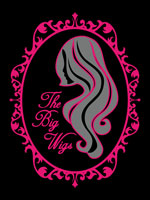Having beautiful hair was as essential to our predecessors as it is to us now. Hair was a sign of nobility and wealth during ancient times. Wigs were worn to protect hair from heat, coloring, and styling. They have since advanced into the mainstream and are currently linked to trends and fashion. So, what is the history of wigs? Here is a quick breakdown of the evolution of wigs over time.
Ancient Egypt Wigs
Before Lady Gaga became our modern-day wig loyalty, the ancient Egyptians wore wigs of all sizes and shapes. In the hot, dry climate, Egyptians could not let their hair grow long without attracting lice or overheating. So men and women shaved their heads and wore wigs of animal hair, wool, palm leaf fibers, or human hair.
Wigs became more popular and started to denote social status, wealth, and religious piety. Women’s wigs were more common than men’s wigs. The wigs were embellished with gold, ivory trinkets, braiding, and hair rings. Surprisingly, most Egyptians were buried in their wigs so they would look stunning in the afterlife.
Roman and Eastern Civilization Wigs
The Phoenicians, Assyrians, Romans, and Greeks were among the ancient civilizations that wore wigs. Romans could use slave hairs to weave wigs for both men and women. Black hair from enslaved Indians and blonde hair from German tribal enslaved people were popular choices for Roman wigs. While during ancient Eastern civilizations like Japan, India, and China, wigs were mainly worn by actors and actresses in traditional theaters.
The 18th and 19th Century Wigs
Expensive wigs with beautifully adorned curls and mil-high coiffures were popular in the 18th century. Queen Elizabeth I was noted for her adorable wigs. Wigs were so popular that everyone in the upper crust had elaborate hairstyles. Unsurprisingly, by the early 19th century, the number of expert wigmakers had increased across European capitals. Big chignons, braids, curls, and enormous hair, created from other hair, were popular in the 1870s. Ladies could not attain a trendy, classy hairdo in the 1870s without using these hairpieces.
The 20th Century Wigs
By the early 20th century, pre-made small curls, wiglets, and false buns were so popular in both France and England. The use of wigs did not diminish even during the 1920s when the “Bob” was the new trendy look that could be acquired even without additional hairpieces.
Present Day Wigs
Clothes, purses, shoes, wigs, and hairstyles are all subject to change. Thanks to modern technology, trendy and sophisticated synthetic wigs are now available. Wigmakers are continually improving wig caps’ fit, style, and structure. Synthetic wigs imitate healthy, natural human hair and are simpler to maintain and affordable.
Medical wigs that are lightweight and comfortable are available for children and people who have lost hair due to medical disorders or treatments like chemotherapy and radiation.
Wigs and Hairstyling Services: Final Thoughts
Hopefully, you now understand how have wigs evolved overtime. It is evident that our ancestors understood the significance of hair, and now we do too. The Big Wigs wig salon provides the best wigs and beauty supplies for men and women in Orange County, California. We also have a specialist ready to cater to all your hairstyling needs. Contact us today for an appointment.

